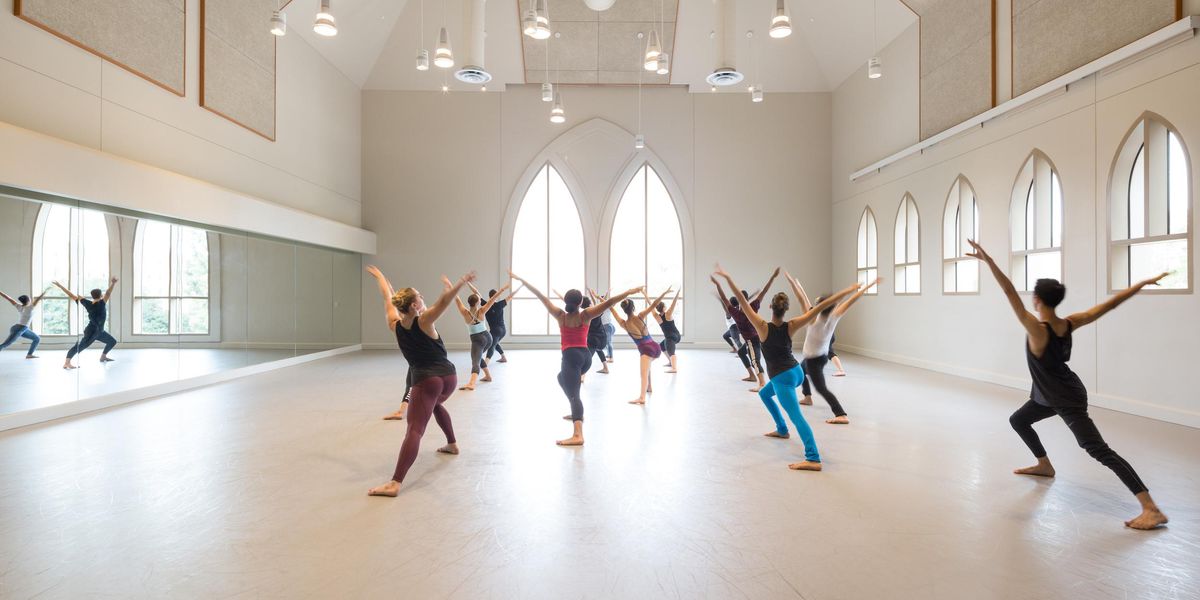Minnesota Dance Theatre
Minnesota Dance Theatre
Goodale Theater
Cowles Center for Dance and the Performing Arts, Minneapolis
March 25, 2012
The Minnesota Dance Theatre’s 50th-Anniversary concert could have served as a primer for how ballet and the classic modern dance styles have intersected and entwined over the past four decades. The eight-member company and additional guest artists performed three works, two from the 1970s by Jirí Kylián and MDT’s founder, the late Loyce Houlton, and one from 2008 by Lise Houlton, Loyce’s daughter and MDT’s current artistic director.
The opening of Lise Houlton’s Point of Departure mixes just-folks kind of moves (lots of flat-footed scuttling around and frenzied gestures) with big extensions and complex patterning. The movement reflects the busy cacophony of the music—Haydn’s “Farewell” Symphony interspersed with traffic sounds, sirens, and ringing phones (sound design by Jeff Pedersen). Katie Johnson appears from a slit in an upstage black curtain (where all the dancers enter and exit) to perform a speedy solo of strident angularity. Eventually four men enter to swing her, stretch her, pass her around.
The dance feels hectic but not charged until a duet for Raina Gilliland (Lise Houlton’s daughter) and Sam Feipel. Feipel seems to be manipulating her, but Gilliland is fully in charge as her long, spidery limbs unfurl with classic élan. She’s cool as a cucumber as he promenades her in a full crouch, en pointe, then suddenly she’s all sinuous flow, subtly evading him. Hints of the illusive Sylphide and the sly Swanhilda/Coppélia abound in her nuanced performance.
Loyce Houlton’s re-enactment of a primitive ritual, Ancient Air, to George Crumb’s Ancient Voices of Children, throws in everything but the kitchen sink. Dancers sharply change the shapes of their bodies extending, contracting, diving to the floor, and spinning with a rat-a-tat-tat quality that sabotages the music’s eerie power. At one point they throw in a few fouettés. At another they swing from trapezes. But the labored partnering and clunky phrasing cannot be blamed on these performers, who show so much texture and musicality in the other dances. It’s more a question of choreographic overkill—dancers being asked to make something of difficult, unwieldy material.
Sam Feipel and Raina Gilliland in
From Ancient Air
Kylián’s enchanting La Cathédrale Engloutie, in contrast, gives familiar arched backward falls, windmilling legs, and curvilinear lyricism a fresh urgency. Set to Debussy’s music played live by pianist Tom Linker, the dance references an ancient Breton myth about a submerged cathedral visible only at sunrise. The sweeping ebb and flow of the movement, enriched by abrupt changes in direction and intention, conjures up a detached oceanic world agitated by human emotion: A woman crosses her arms and bows her head, while another plunges into deep second position, rolling her head in lamentation. Two men writhe in counterbalanced shapes, echoing the cathedral’s architecture, or mirroring the grueling labor of placing stone on stone. The earthy sunrise tones of both costumes (unacknowledged in the program) and lighting (Joop Caboort, adaptation by Kees Tjebbes) give a sense of muted timelessness. Gilliland, Johnson, Justin Leaf and guest artist Max van der Sterre perform with the simplicity and conviction of true believers.
Max van der Sterre, Raina Gilliland, and Justin Leaf in
La Cathédrale Engloutie
All photos by Jim Smith, Courtesy MDT.
Pictured at top: Raina Gilliland and Sam Feipel in
Point of Departure




